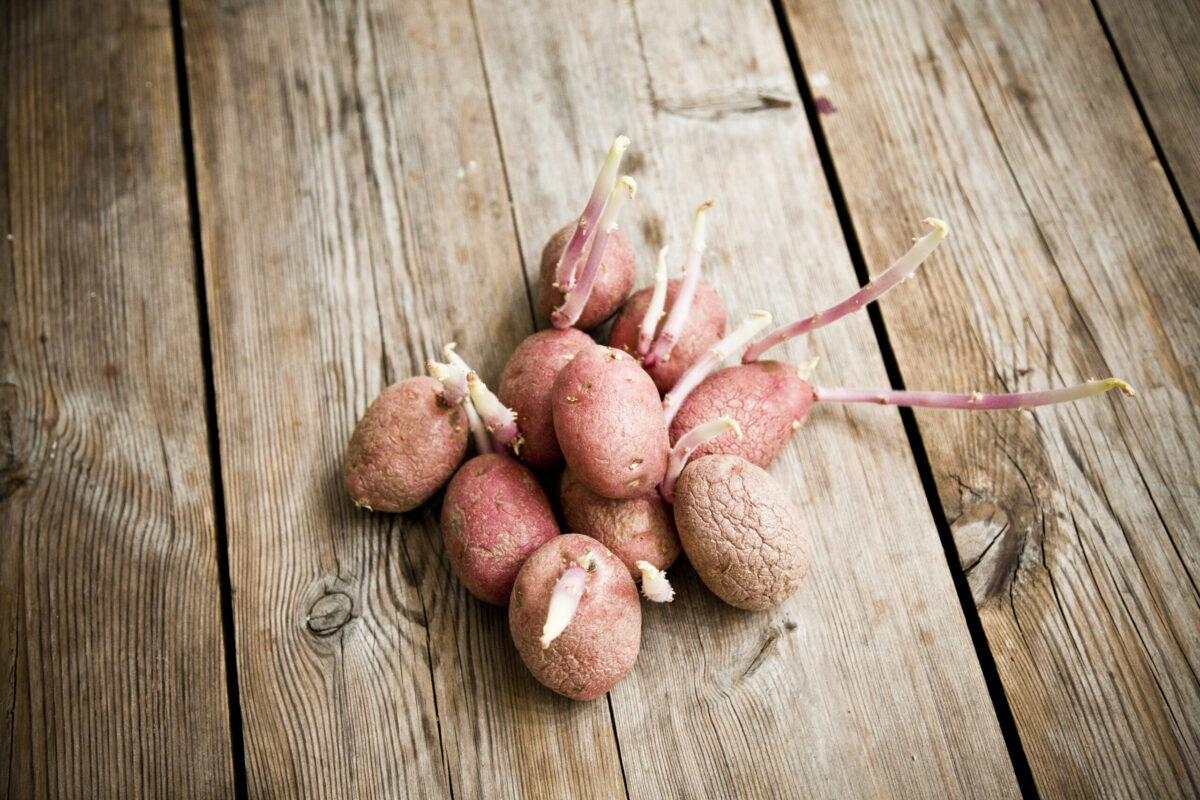One nice thing about living in Tennessee is that local farms are almost always nearby to provide fresh fruits and vegetables. And several growers and chefs have shared tips with WellTuned about making the most of fresh food when it’s in season.
But some produce does contain poisonous parts that can pose a threat to families, and especially to young kids or animals.
In most instances, you’d have to consume quite a bit of any of these to make you really sick. As long as you know the basics, you should be safe.
7 kinds of produce with poisonous parts
1. Apple seeds & stone-fruit pits
If you’ve ever bitten into an apple seed or cherry pit, you know it tastes bitter. You’d recognize a similar flavor in the pits of other stone fruit — apricots, peaches, plums, nectarines — if those weren’t too tough to bite into. The off putting flavor is a protective element the plant uses to make itself unappetizing to humans and animals. It comes from a chemical (amygdalin) that turns into cyanide when mixed with the acid in the human digestive systems. Swallowing a few apple seeds won’t have any effect, but pulverized pits should always be avoided.
2. Undercooked kidney beans
Many legumes can upset your stomach if they’re undercooked, but it’s especially important to look out for kidney beans. Red kidney beans contain a chemical (phytohaemagglutinin) that can cause nausea, diarrhea and vomiting if not prepared properly. Cooking them breaks down this chemical, so be sure to cook dry kidney beans fully. (Canned beans are pre-cooked.) And never let children play with dry kidney beans or use them for art projects.
3. Tomato leaves, roots & stems
While you’d have to eat a lot of leaves, roots or stems to have a reaction, it’s possible for the leafy parts of tomatoes to make you sick. They contain an alkaloid (tomatine) that’s mildly toxic in large quantities, though most people won’t experience more than an upset stomach. Animals, on the other hand, are more susceptible. If you grow tomatoes at home and have a dog who’s fond of chewing on things, be sure to put your plants out of reach.
4. Sprouted potatoes
While potatoes are safe to eat even after they’ve sprouted, there are parts you should remove to safeguard against illness. The sprouts and eyes — the part of the potato that would sprout into a new potato plant if sown — contain compounds that can cause a headache, vomiting or other digestive symptoms. The skin also contains these compounds, though you’d have to eat a lot of it to get sick, which is why it’s safe to eat skin-on fries. Green potato skin, however, should be peeled off before cooking to avoid a negative reaction.
5. Rhubarb leaves
Rhubarb leaves are high in oxalic acid, which can cause kidney failure or kidney stones when consumed over time. While one death was reported during World War I (the leaves were mistakenly recommended as a food source), it would take 10-plus pounds for you to feel the effects. In fact, the “toxic” compound in rhubarb leaves also occurs in much lower amounts in spinach, broccoli, cauliflower, and Brussels sprouts.
6. Asparagus berries
Most of us will never come in contact with asparagus plants, let alone their berries. But if you grow asparagus at home, be aware that its berries contain a steroid that can cause vomiting, diarrhea and stomach pain. As with tomato plants, curious dogs are most susceptible, so be sure to section off your asparagus plants. The stems, on the other hand, are perfectly edible for humans and pets.
7. Raw cashews
While we tend to think of cashews as nuts, they’re actually seeds from the cashew fruit, a plant most commonly found in the Amazon. The shells of cashews are covered with anacardic acid, which is related to the acid found in poison ivy. That’s why you’ll never see cashews sold in shells like peanuts — they almost always come roasted to protect consumers.
Get more information about specific health terms, topics and conditions to better manage your health on bcbst.com. BlueCross BlueShield of Tennessee members can access wellness-related discounts on fitness products, gym memberships, healthy eating and more through Blue365®. BCBST members can also find tools and resources to help improve health and well-being by logging into BlueAccess and going to the Managing Your Health tab.


